本篇文章给大家谈谈TALL是谁发明的,以及对应的知识点,希望对各位有所帮助,不要忘了收藏本站喔。
文章目录:
哪位高手能提供一些关于咖啡的专业英语?急~!~
Caffè Mocha 摩卡
Caramel Macchiato 焦糖玛奇朵
Caffè Americano 美式
Caffè Latte 拿铁
Cappuccino 卡布奇诺
espresso 特浓咖啡
Caramel Coffee Jelly 焦糖吉利
Vanilla Frappuccino香草星冰乐
coffee Frappuccino咖啡星冰乐
mocha Frappuccino 摩卡星冰乐
Frappuccino® Blended Tea 芒果茶星冰乐
Decaf 脱因咖啡
non-fat 脱脂牛奶
【学名】用作商品咖啡的4种:
大果咖啡 Coffea liberica
中果咖啡 Coffea canephora
小果咖啡 Coffea arabica
高产咖啡 Coffea dewevrei
Coffea是 咖啡树
【英文】coffee
【别名】小粒种又称阿拉伯种,
中粒种又称甘弗拉种,
大粒种又称利比里亚种
常见的主要有2种:Arabica 和Robusta。
在国外,咖啡更是日常生活不可缺少的饮料,咖啡店随处可见,从店内飘出的咖啡香总不禁令人放慢脚步,贪婪的多吸两口。
现在的你正漫步在异国的街道,路旁的咖啡馆使你想享受悠闲的时刻,咖啡因的香味唤起你的浪漫情怀,进去啜饮一杯咖啡吧!(等一下!)心里有个微弱的声音让你却步。真糟糕,老师教的英文,全部留在学校,当你转身要走,那一堆帅气侍者(waiter)和美丽的侍女(waitress)又在那对盯旁你频频微笑。
首先,我们先得要开门进去,(废话!)But,先弄清楚门上标示的英文"Push",是 推;而"Pull"是拉。
(什麽?太简单了,我早说你们聪明了。)
看吧!A piece of cake.(轻而易举)已经带你到咖啡店,剩下看你罗!
当你到咖啡店时,侍者总会亲切地先问候你
问候语: 你可以回答:
"Hi!"
"How are you?"
"How's everything?"
"How are you doing?"
"Good morning( afternoon; evening)." "Fine. Thank you."
"Great. Thank you."
"Very well. Thanks."
"Fine, thank you, and you?"
应用初中所学的英文就可以轻松对答了,要记得保持微笑(Keep smiling)和礼貌(Be polite)
接着,侍者会问你有几位要用餐? 只须用简单的英文数字即可。
"For how many people?" "A table for one; two; three..........."
国外多是需要带位,可别先冲进去,丢个大包包占位!有些店还会问
"Smoke or non-smoke?"吸烟区或非吸烟区。
至今你都表现的不错,当你舒服坐在椅子上,waiter (waitress)也给你一份菜单(menu),翻开它,成堆的英文只看得懂"coffee",算了,闭起眼睛随便点一个好了!(别这麽自暴自弃)其实只要说"coffee",你就可以喝到咖啡水(原谅我腔尺如此形容,不过味道真的淡伍则高如水。)
介绍一般常见的咖啡种类:
A.一般咖啡 : 单品(single estate)+综合(blend)
single estate:
blend: Hawaiian Kona 夏威夷科那 Colombian 哥伦比亚
Mocha 摩卡 Brazilian 巴西
Mendeling 曼特宁 Kenya AA 肯亚特极
Java 爪哇 Kilimonjaro 吉利马扎罗
Blue Mountain 蓝山
有各种不同口味,视店家作本日咖啡 everyday blend
B.花式咖啡 : 加入各种口味的糖浆(syrup);鲜奶油(whipped cream)少许酒
Irish coffee 爱尔兰咖啡
Vienna coffee 维也纳咖啡
Ice Coffee也算花式咖啡一种,但在国外较少见°
Frapuccino 法布奇诺
Caffé Frio 冰沙咖啡
C.意式咖啡 (Italian coffee) :
加入蒸牛奶(steamed milk) Caffé Latte 拿铁(奶量较多)
Cappuccino 卡布其诺
Mochaccino 摩卡其诺(加巧克力酱)
基本作底 Espresso 分为单份浓度(Single)和双份浓度(Double)
D.Decaf低咖啡因咖啡 :
嗯~~,选好咖啡之后,眼角瞄到玻璃柜中那些精致的糕饼,看起来真美味!(Look so delicious!)把Menu翻到甜点(Dessert)那页,节食(on a diet)?唉!回去再说吧!
蛋糕类(Cake) 巧克力口味 比斯考提(Biscotti) 松糕类(Muffin)
Cheese Cake 起士蛋糕 ~~~ 咖啡店经典蛋糕
Sponge Cake
海绵蛋糕
Chiffon Cake
戚风蛋糕
Vanilla Cream Cake
香草奶油蛋糕
Marbled Chocolate
Cheese Cake
大理石蛋糕
Chocolate Cake 巧克力蛋糕
Black Forest Cake
黑森林蛋糕
Swiss Chocolate
瑞士巧克力蛋糕
White Chocolate Cake
白巧克力蛋糕
为一种长型的硬脆饼,用来沾咖啡别有一般风味,带有浓浓的奶油味°
Butter
奶油
Chocolate
巧克力
Hawaii Nut 夏威夷坚果口味
有很多口味:
Banana 香蕉
Lemon 柠檬
Vanilla 香草
Strawberry 草莓
Chocolate 巧克力
Blueberry 蓝莓
Cranberry 蔓越莓Raspberry 覆盆莓
甜甜圈(Doughnut) 派类(Pie) 格子松饼(Waffle) 英式酥饼(Scone)
Plain Doughnut
原味甜甜圈
Jelly Doughnut
果酱甜甜圈
Chocolate Doughnut
巧克力甜甜圈
Powdered Sugar
Doughnut
糖粉甜甜圈
Apple Pie
苹果派
Lemon Pie
柠檬派
Pecan Pie
核桃派
Cherry Pie
樱桃派
Boston Pie
波士顿派 Butter
奶油
Chocolate
巧克力
Cinnamon
肉桂
Pancake
这是一种薄薄一片的煎饼,一份叁至四片,沾糖浆或奶油° 呈叁角型,烤后热热酥酥的很好吃!
Butter
奶油
Chocolate
巧克力
Cranberry
蔓越莓
卷类(Roll) 塔类(Tart) 贝果(Bagel) 其他
Miniature Danish
Roll 丹麦卷
Raisin Roll
葡萄乾卷
Maple Cinnamon
Roll 枫糖肉桂卷
Caramel
焦糖卷 Fruit Tart
水果塔
Strawberry Tart
草莓塔
Lemon Tart
柠檬塔 国外常吃的圆形面包,切开涂抹酱料°
Plain 原味
Herb 药草
Garlic 大蒜
Wheat 全麦
Cranberry 蔓越莓
Blueberry 蓝莓 Rice Pudding
白米布丁
Custard Pudding
鸡蛋牛奶布丁
Cream Brulee
奶油松露
为一种法式甜点
选好了吗?当侍者询问:
你可以回答:
May I take your order? Sorry, I am not ready yet.
(实在太难抉择,还没决定好°)
Yes, I would like............
Yes, I will take...............
yes, I will have...............
*
当点餐时,尽量避免用"WANT"这个字,因为太强烈有些不礼貌的感觉。而一杯咖啡为 A cup of coffee ; 一片蛋糕为 A piece of cake.
记得用数量词唷!
*
接下来,就痴痴的等待餐点送来吗?Come on!别浪费时间,看看桌上的摆设,通常放有奶精和糖或是糖浆。
牛奶 Whole Milk(全脂); Low Fat Milk(低脂); Skim Milk(脱脂);Cream 鲜奶油
糖 White Sugar(白糖); Brown Sugar(黄糖); Sweetener(代糖)
糖浆 Syrup 有很多口味: Maple(枫糖);Almond(杏仁); Strawberry, Blueberry......
*
享受完美味的餐点后,记得用餐巾纸(Napkin)擦擦嘴,才不会失礼。充满咖啡香的你,身体的血液正因咖啡因而感到精神百倍,可别这样就兴奋过头出去了!
Check, please! 请买单! 对吗,要先付钱唷。
(请记得要找从头到尾都在服务你的那位服务生,在国外都会有专门服务你这桌的侍者,不要随便抓一个人就要他算帐)
侍者会问:Credit card or Cash? 信用卡或现金?
付钱之后,嗯?怎麽侍者还眼巴巴地望着你,可别小鹿乱撞,是的,小费(Tip)别忘记罗!通常是你所花费金额的10~15%。
Congratulations!恭喜恭喜,你已完成了咖啡之旅。什么??你还不敢进去?好吧!看来,你只好回饭店泡杯即溶咖啡
(Instant Coffee), 然后再回来,好好学英文!
Relax and enjoy your coffee!!!
意大利咖啡(Espresso)
“Espresso”原意为“快速”,Espresso Cafe则指在瞬间提炼出来的浓缩咖啡。由于这种咖啡泡法源自意大利人阿奇加夏与1946年所发明的蒸汽压力咖啡机,故一般又惯称为意大利咖啡。
一般在家中冲泡意大利咖啡,系利用意大利摩卡壶冲泡成的,这种咖啡壶与虹吸式咖啡壶一样,同样是利用蒸汽压力的原理来淬取咖啡。但摩卡壶是使受压的蒸汽直接通过咖啡粉,让蒸汽瞬间穿过咖啡粉的细胞壁,将咖啡的内在精华淬取出来,再加上使用深炒的咖啡豆冲泡,故而冲泡出来的咖啡具有浓郁的香味及强烈的苦味,咖啡的表面并浮现一层薄薄的咖啡油,这层油正是意大利咖啡诱人香味的来源。由于是高浓缩的咖啡,故一般在品尝这种咖啡时,都使用小咖啡杯品尝。
这种饮料一杯的热量超过500卡路里,所以,不适合于减肥者饭后饮用。
卡布奇诺(Cappuccino)
20世纪初,意大利人阿奇加夏发明蒸汽压力咖啡机的同时,也发展出了卡布奇诺咖啡。卡布奇诺是在偏浓的咖啡上,倒入以蒸汽发泡的牛奶。此时咖啡的颜色,就象卡布奇诺教会的修士在深褐色的外衣上覆上一条头巾一样,咖啡因此而得名。
拿铁咖啡(Latte)
它是意大利咖啡的另一种变化,冲泡步骤与卡布奇诺相同,只是咖啡、牛奶、奶泡的比例稍作变动而已。
法国牛奶咖啡
咖啡和牛奶的比例为1:1,故正统的法国牛奶咖啡冲泡时,应该双手同时执牛奶壶和咖啡壶,同时由两旁一起注入咖啡杯中。
土耳其咖啡
它是一种采用原始煮法的咖啡,今日在土耳其、希腊及巴尔干诸国,这些曾受奥斯曼土耳其帝国统治的国家,仍流行饮用土耳其咖啡。
爱尔兰咖啡
爱尔兰人最了解威士忌拥有一股独特而浓烈的薰香和淡淡甜味,一威士忌调成的爱尔兰咖啡,更能将咖啡的酸甜味道衬托出来。由于威士忌的酒精成分颇高,可视个人酒量的好坏控制温热时间。酒精挥发的威士忌,让咖啡中散发出一丝成熟的忧郁感,很适合在寒冷阴雨的天气里喝上一杯。
摩卡咖啡(Mocha)
以咖啡最早的输出港口命名的摩卡咖啡,是在拿铁咖啡中加入巧克力所调制而成。
皇家咖啡
它的由来,据说是拿破伦在远征苏俄时,因遇到酷寒的冬天,于是命人在咖啡中加入白兰地以取暖,因此发明了这道咖啡。刚冲泡好的皇家咖啡,在舞动的蓝白火焰中,猛然窜起一股白兰地的芳醇,勾引着期待中的味觉,雪白的方糖缓缓化为诱人的焦香甜味,一小口一小口品啜着,令人无端幻想坐拥皇宫的雍容喜悦。
绿茶咖啡
即是一道纯东洋风味的咖啡。给冲泡好的咖啡注上鲜奶油,再撒上一些绿茶粉。绿茶所特有的优雅清香及略带苦涩的口感,与咖啡浓郁厚重的香味及略带圆柔酸味及甜香的口感,在口中交流激荡,如同东西方两种不同文化的交流过程,在冲突与融合中寻求安定平衡点。
瑞琪蒙的鸳鸯咖啡
瑞琪蒙的名气源自英文Rich man,译为高贵绅士的意思。此款咖啡口感细腻,喝起来柔和而且香甜,有咖啡原始的微酸微苦,有伴有奶茶的细腻可口,加上名字的完美浪漫,是一款十分流行又年轻人喜欢的花式咖啡。
制作该款咖啡较为简单,需要一个古典石头杯,120ml的热伯爵奶茶和120ml的现磨热咖啡,将两者混合便可。
八年级上册英语期末试卷
五. 单项填空(共15分,每小题1分)
从下列各句所给的A、B、C、D四个选项中,选出可以填入空白处纯告慎的最佳选项。
( )21. -Who is Mozart?
-______ is a musician.
A. He B. She C. Her D. Him
( )22. -Mom, _____ I watch TV?
-Yes, you can. But you have to finish the homework first.
A. must B. could C. will D. need
( )23. -______ milk do we need?
-Just one cup.
A. How much B. How long C. How often D. How many
(友告 )24. That is Beckham. He was born ________ 1975.
A. at B. on C. in D. to
( )25. -Let’s ________ fruit salad for lunch.
-OK, good idea.
A. go B. make C. do D. get
( )26. Class 9 had a great time on the school trip. They were very ______.
A. sad B. clever C. sorry D. happy
( )27. -What did you do last Sunday?
-We ______ many photos at the park.
A. take B. takes C. took D. taking
( )28. -What do you want to do for vacation?
-I _______ my grandmother.
A. visit B. am going to visit C. visited D. visiting
( )29. Eliza won the first prize. She played _______ beautiful piano piece.
A. a B. an C. the D. 不填
( )30. All the movie theaters are good, but the Screen City is _______ in our town.
A. good B. better C. a best D. the best
( )31. Uncle Martin held a yard sale. But ______ one came because the weather was so bad.
A. some B. every C. any D. no
( )32. -I have a toothache.
-Maybe you should see a _______.
A. dentist B. friend C. driver D. pilot
( )33. It is much _____ today than yesterday. I need to put on my coat.
A. cold B. warm C. colder D. warmer
( )34. -How can you do your homework _______ the music is so loud?
-Well, I’ll turn it off.
A. because B. when C. for D. where
(做敬 )35. -There aren’t enough snacks for the party. Did you buy ______?
-No, I didn’t. I bought everything they had in the shop.
A. little B. less C. more D. most
六. 完形填空(共15分,每小题1分)
阅读下面两篇短文,根据短文内容,从36-50小题所给的A、B、C、D四个选项中,选择最佳选项。
(A)
New Year’s Resolution Survey Results
We got over 1,000 letters, faxes and e-mails from our readers about their New Year’s Resolutions. Many readers are going to work 36 in school this year. To be healthy, lots of readers are going to play 37 and some readers said they are going to eat more vegetables. Some girls said 38 are going to exercise more to 39 . Some parents are going to 40 the subjects their children learn at school. They want to communicate better 41 their kids. An old lady said she found a job as a foreign language 42 . She is going to teach in China next year.
( )36. A. higher B. harder C. faster D. earlier
( )37. A. music B. the guitar C. sports D. the games
( )38. A. she B. they C. he D. you
( )39. A. go out B. have fun C. keep fit D. get up
( )40. A. study B. watch C. think D. pass
( )41. A. with B. of C. in D. at
( )42. A. cook B. doctor C. worker D. teacher
(B)
Maria was a 42-year-old lady. She always said she had one of the world’s best 43 . She worked for National Park Service at the Statue of Liberty (自由女神雕像)in New York City. “ 44 come here from all over the world, ”Maria said. “Helping them learn about‘Lady Liberty’is really 45 .”
Maria began her day just like one of the visitors. She took a fifteen-minute boat 46 to Liberty Island, where the statue 47 . Then she helped visitors see the exhibits in the museum. The museum is 48 the famous statue. In the museum, Maria often talked with visitors 49 they climbed to the statue’s crown. (皇冠). “It’s fun to talk with all these people, ”she said. “Besides, it 50 me my exercise. There are 154 steps on the way to the crown. ”
( )43. A. jobs B. places C. parks D. museums
( )44. A. Readers B. Learners C. Reporters D. Visitors
( )45. A. boring B. interesting C. special D. terrible
( )46. A. run B. hike C. ride D. travel
( )47. A. rested B. stayed C. made D. stood
( )48. A. on B. over C. inside D. behind
( )49. A. as B. until C. for D. though
( )50. A. plans B. gives C. helps D. does
阅读部分(共26分)
七. 阅读理解(共22分,每小题2分)
阅读下面三篇短文,根据短文内容,从第51-61小题所给的A、B、C、D四个选项中,选择最佳选项。
A
Mother’s Day is an important day. It’s a day children can show their mothers how much they love them. On Mother’s Day, many children give flowers to their mothers. This makes them very happy.
Mrs. Green lived in a small street. She had a flower shop. People who lived near her store were poor. The children didn’t have money to buy flowers. Mrs. Green helped them. The children worked one hour for Mrs. Green. They cleaned the windows in the store. Then Mrs. Green gave them some flowers to take home for their mothers. The mothers had a nice Mother’s Day. Both the mothers and children were happy.
( )51. On Mother’s Day, children give _______ to their mothers.
A. flowers B. cards C. foods D. clothes
( )52. Mrs. Green lived in a ________ street.
A. big B. small C. clean D. dark
( )53. The children worked one _______ for Mrs. Green.
A. hour B. week C. month D. year
( )54. The children _____ in the store.
A. made tea B. washed the car
C. watered flowers D. cleaned the windows
B
Simon plays the part in “The Little Angel”(天使)at the Landers Theater.
Want to go?
What: “The Little Angel”
7:30 p.m. today, Thursday
When: 2:30 and 7:30 p.m. Saturday
2:30 p.m. Sunday
Where: The Landers Theater, 311 E. Walnut St.
Tickets: $ 8 for people over 18; $ 6 for kids 14, younger and students, are sold 30 minutes before each show
Call: 869-1334
Also: Art teacher Jan Myers’ first and second grade students at Shady Dell and Watkins elementary schools created more than 100 angels, which are exhibited in the Landers Theater.
55. When can you see the play?
A. At 2:30 p.m. on Thursday.
B. At 2:30 p.m. on Saturday.
C. At 7:30 p.m. on Friday.
D. At 7:30 p.m. on Sunday.
56. If your parents take you to see the play, you should pay ________ for the tickets.
A. $14 B. $20 C. $22 D. $24
57. Which of the following statements is true?
A. Simon will sing a song in the play.
B. You can call 869-1334 to talk to the actors.
C. Students will play 100 angels at the theater.
D. Students’ works will be shown in the theater.
C
A Japanese toy maker speaks out that they made a gadget (小配件)that translates (翻译)dog bark(狗叫)into people’s language and plans to sell the gadget in U.S. pet stores and gift shops this summer.
Tokyo-based Takara Co. Ltd(有限公司)says about 300,000 of the dog translating gadgets have been sold since it was on sale in Japan late last year. They think far bigger sales come to America in August. The United States is home to about 67 million dogs, more than six times the number in Japan.
Regarded as one of the coolest inventions (发明)of 2002 by Time magazine, the gadget translates each bark into six feelings. It can tell whether the dog is happy, sad, disappointed or angry etc.
“We know that the Americans love their dogs so much, so we don’t think they will mind spending $ 120 on this gadget, ”the marketing manager said during an interview in America.
One thing that seems certain is that the market for animal translation gadgets will likely keep on a dog’s world since Takara has no plans to make a gadget for cats. “They are too changeable, ”the marketing manager said.
58. This text mainly tells us that _______.
A. the gadget is very expensive
B. Japanese made a new gadget
C. American dogs can tell their feelings
D. Japanese will sell the gadget in America
59. “They are too changeable. ”means “______are too changeable. ”
A. Cats B. Dogs C. Stores D. People
60. We can learn from the text that _______.
A. people need to talk to dogs
B. there are more dogs in America than in Japan
C. Japanese people don’t like dogs
D. they will make a gadget for kids in the future
61. Takara Co. Ltd. is ________the sale of its new gadget.
A. proud of B. satisfied with C. sure of D. worried about
八. 任务型阅读(共4分,每小题1分)
阅读下面短文,根据你读到的信息完成表格。
Learning a new language isn’t easy. For many of us, speaking it is the hardest part! Here are some tips (advice)to help you become more comfortable speaking English.
Tip 1 When you study, make your mouth do what your mind is learning. If you read aloud, you make your mouth and your mind work. This will help you with both speech and pronunciation(发音)
Tip 2 Talk to yourself as much as possible. You need to be comfortable making sounds in English. All over the day, talk to yourself in English! This will help you feel comfortable thinking in English. Then write down what you are saying and read it aloud again.
Tip 3 Have a “study buddy(partner)”. Get together with him or her at least once a week and study together. Speak as much English as you can whenever you meet. Then you can help each other.
Helping yourself talk in English
Tips What to do Why
1 If you 62. ______, you make your mouth do what your mind is learning. Help you with speech and pronunciation.
2 Talk to yourself 63. ______ possible. And then write down what you are saying and read it aloud again. Help you 64. ___ thinking in English.
3 Have a “study buddy”. Get together with him or her at least once a week and study together. 65. _______
综合语言运用(共24分)
九. 词汇(共6分,每空1分)
请选择方框中的词语填空。只填写字母。
A. had pizza B. watched C. basketball player D. park
E. excited F. visited G. day off
Yesterday Nick and I had a very nice (1)_____. We (2)______ for lunch. Then we went to a park. At the (3)______, we met a famous (4)______, Yao Ming. After that, we (5)______ a movie about living in the future. We were very (6)______.
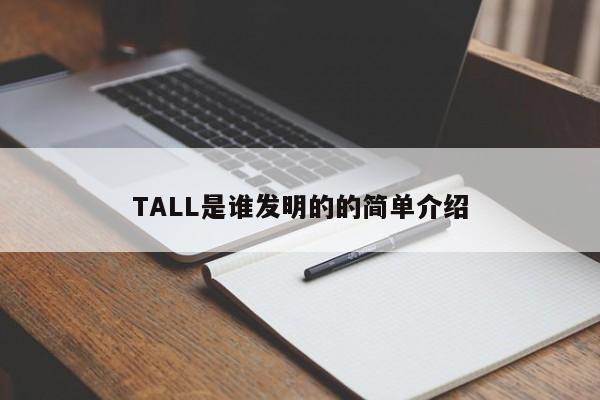
建造的英语单词怎么写?
建立的英文单词怎么写
Establish - 一般用于表示建立关系,机构和国家
Construct -一般用于表示建立建筑物,或是构建腊友
一个家里是不是应该男缺局迹伏并的作主?
男女平等 .主要看这件事谁是主角了.是你的事肯定最后还是要你做主的呀.他的事一般也是他自己做主的.
一家人的事最好都商量商量了.
"我要建高楼大厦"的英语单词怎么写?
many-storied buildings; tall buildings; high buildings and large mansions
以上来源于:新汉英大辞典
创造的英语单词怎么写啊,会的写
创造:create [kri:ˈeit]
生产:produce [prəˈdju:s, ˈprɔdju:s]
发明:invent [inˈvent]
关于学校的建筑物的英语单词怎么写
school building教学楼 学校建筑
sports field操场
library 图书馆
dormitory 宿舍
diningroom 食堂
最伟大的发明 英文
口语考试,《最伟大的发明》,以下的较为简单,但是不知道你要芦备皮讲几分钟,全篇给你贴上滚差:
=============================
Ten Great Inventions of China
=============================
In the last two centuries, new cultural discoveries have nearly rewritten history. It’s been an exciting time, full of adventure and surprises. Around every corner there are new responses to questions we had already imagined answered. And of these breakthroughs, none shines as brightly as the impact of ancient Chinese inventions on modern life. As we explore ten of the greatest inventions and innovations of Ancient China, you may be surprised at their influence on recent technology.
1. Paper. Paper, as we know it, was invented in China around the year 105. After seeing earlier attempts made from silk, bamboo sticks and animal skins, Cai Lun came up with his own idea. After mixing mulberry bark, rags, wheat stalks and other stuff, a pulp formed. This pulp was pressed into sheets and dried, becoming a crude form of paper. Paper was such an important invention that the process of making it was a jealously guarded secret. The secret was safe until the seventh century when the art spread to India.
2. The Printing Press. Before Johann Gutenberg “invented” the printing press in the 1440’陪差s, China created a type of printing press between 206 B.C. and A.D. 45. It was made using stone tablets to create a “rubbing” of famous Buddhist and Confucian texts. Next came block printing in the Sui Dynasty. In block printing, images and words were engraved on wooden boards, smeared with ink and pressed onto sheets of paper. Later, moveable type printing presses were introduced. According to the authors of Ancient Inventions, “By A.D. 1000, paged books in the modern style had replaced scrolls – a good 450 years ahead of Gutenberg.”
3. The First Book. Due to the early advent of the printing press, China also claims the first book. In 868, almost six hundred years before the Gutenberg Bible, the earliest known book was printed. By the end of the Tang dynasty, China had bookstores in almost every city.
4. Paper Money. While today you’d rather carry a lot of cash instead of coin, that hasn’t always been the case. The idea of paper currency was first attempted under Emperor Han Wu-Ti (140-87 B.C.) after war had drained the treasury. He issued treasury notes, worth and in exchange for 400,000 copper coins. Instead of paper, the Emperor used the skin of the white stag. But the creature was so rare that the idea soon lost appeal. In the early 800’s, the idea revived to deter highway robbers. In 812, the government was again printing money. By the year 1023, money had an expiration date and was already plagued by inflation and counterfeiting. Nearly six hundred years later paper money headed west, first printed in Sweden in 1601.
5. The Abacus. Well before Texas Instruments, the first calculator was in the works. The abacus dates from around the year 200 B.C. It is a very advanced tool with a simple design. Wood is crafted into a rectangular frame with rods running from base to top. About 2/3’s from the base, a divider crosses the frame, known as the counting bar. On each of the rods are beads. All of the beads above the counting bar equal five. Those below equal one. The rows of rods are read from right to left. The furthest bar to the right holds the one’s place, the next holds the ten’s place, then the hundred’s, and so on. While its design may sound complex, there are some Chinese today so skilled that they can solve difficult math problems faster than someone using a calculator!
6. The Decimal System. In the West, the decimal system appeared quite recently. Its first believed instance was in a Spanish manuscript dated around 976. But, the first true example goes back much further. In China, an inscription dated from the 13th century B.C., “547 days” was written as “five hundred plus four decades plus seven of days.” The Chinese likely created the decimal system because their language depended on characters (like pictures) instead of an alphabet. Each number had its own unique character. Without the decimal system, the Chinese would have had a terrible time memorizing all of these new characters. By using units of ones, tens, hundreds, etc., the Chinese saved time and trouble.
7. The Mechanical Clock. In the year 732, a Buddhist monk and mathematician invented the first mechanical clock. He named it “Water-Driven Spherical Bird’s-Eye-View Map of the Heavens.” Like earlier clocks, water gave it power, but machinery cased the movement. But, after a few years, corrosion and freezing temperatures took their toll. It wasn’t until 1090, when astronomer Su Sung designed his mechanical marvel “Cosmic Engine”, that a more dependable timepiece was made. Created for Emperor Ying Zong, this clock had a tower over 30 feet tall. It housed machinery that, among other things, caused wooden puppets to pop from one of five doors at regular intervals throughout the day. (Much like the modern idea of a Cuckoo clock.) The entire machine was powered by a giant waterwheel. This clock ran until 1126, when it was dismantled by the conquering Tartars and moved to Peking for another several years. The first clock reference in Western history was in 1335, in the church of St. Gothard in Milan.
8. The Planetarium. A planetarium is a big enclosed space that shows the stars and constellations on the inside. Orbitoscope was the name of the first projection planetarium. It was built in Basil in 1912 by Professor E. Hinderman. But, once again, China is the mother of this invention. The first planetarium is attributed to the design of an early emperor. As one source states, an astronomer named Jamaluddin created a planetarium during the Yuan Dynasty (1271-1368), along with a perpetual calendar and other important astronomical devices.
9. The Earthquake Sensor. The earliest earthquake sensor was also an interesting piece of art. It was a bronze cylinder about 8 feet around, with 8 dragons perched above 8 open-mouthed frogs. In the mouth of each dragon rested a bronze ball. When an earthquake struck, a pendulum inside the cylinder would swing. It knocked the ball from the mouth of the dragon and down into the frog’s mouth. That frog’s back was then facing the direction of the center of the quake. Chang Heng invented it in A.D. 132 (during the Han Dynasty), almost 600 years before the first western sensor was made in France. Later, in 1939, Imamura Akitsune recreated the invention and actually proved it effective.
10. The Helicopter Rotor Propeller. While the Ancient Chinese didn’t actually invent the helicopter, they were involved in its creation. In the 4th century A.D., they invented a toy called the “Bamboo Dragonfly”. You’ve probably seen them as prizes at local fairs or carnivals. It was a toy top, with a base like a pencil and a small helicopter-like blade at the end. The top was wrapped with a cord. When you pulled the cord, the blade would spin around and soar into the air. This toy was studied by Sir George Cayley in 1809 and played a role in the birth of modern aviation. It wasn’t until the early 1900’s that the first helicopter took flight.
英语的100句名言警句短的
1、A bosom friend afar brings a distant land near. 海内存知己,天涯若比邻。——唐代王勃《送杜少府之任蜀州》
2、A common danger causes common action. 同舟共济。——现代曲波《林海雪原》二十七
3、A contented mind is a continual / perpetual feast. 知足常乐。——春秋老子《道德经》
4、A fall into the pit, a gain in your wit. 吃一堑,长一智。——明·王阳明《与薛尚谦书》
5、If learning is just imitation, then we will not have science or technology.如果学习只在于模仿,那么我们就不谨绝会有科学,也不会有技术。——德国高尔基《语录》
6、A letter from home is a priceless treasure. 家书抵万金。——唐代杜甫《春望羡派》
7、All rivers run into the sea. 殊途同归。——西周姬昌《周易·系辞下》
8、All time is no time when it is past. 机不可失,时不再来。——五代·安重荣《上石敬瑭表》
9、An apple a day keeps the doctor away. 一日一个苹果,身体健康不求医。现代张祥派姿恒《健康百谚》
10、As heroes think, so thought Bruce. 英雄所见略同。——晋·虞溥《江表传》
TALL是谁发明的的介绍就聊到这里吧,感谢你花时间阅读本站内容,更多关于、TALL是谁发明的的信息别忘了在本站进行查找喔。
版权声明
本文仅代表作者观点,不代表百度立场。
本文系作者授权百度百家发表,未经许可,不得转载。

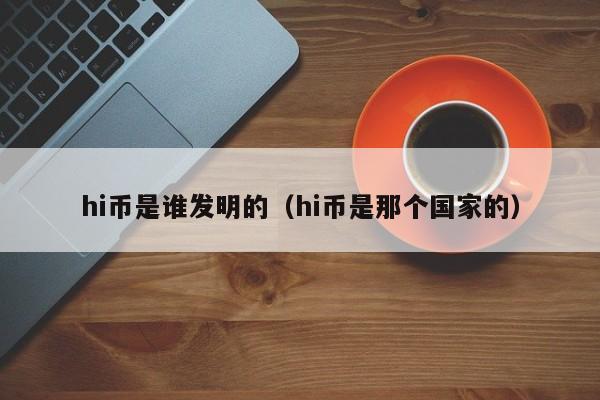
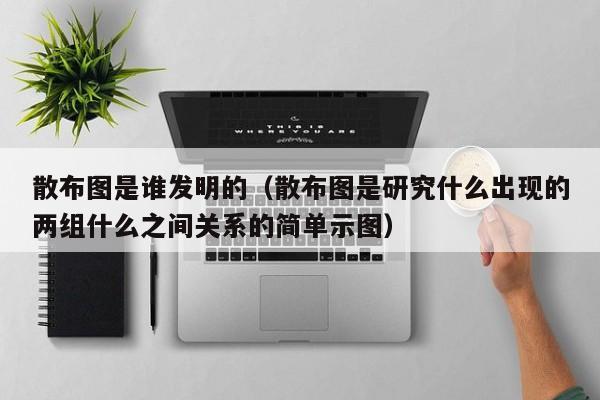

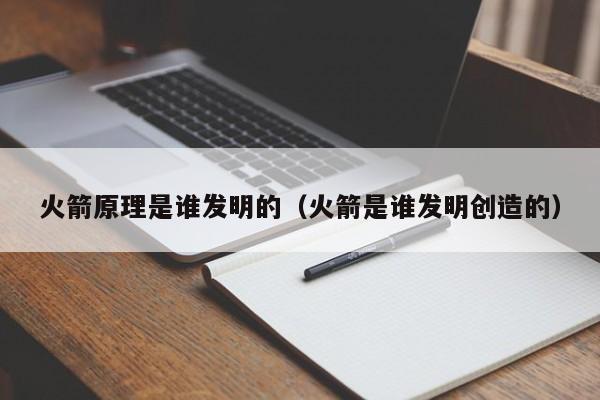
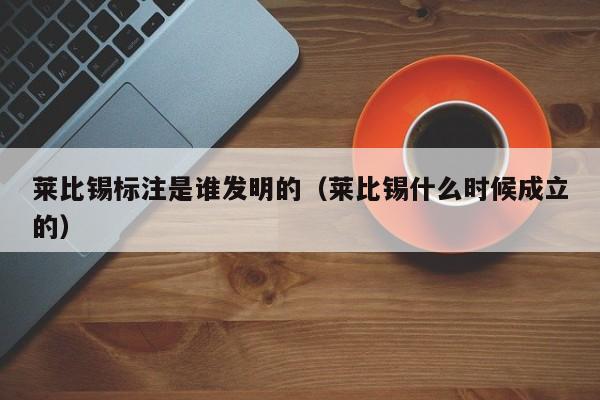
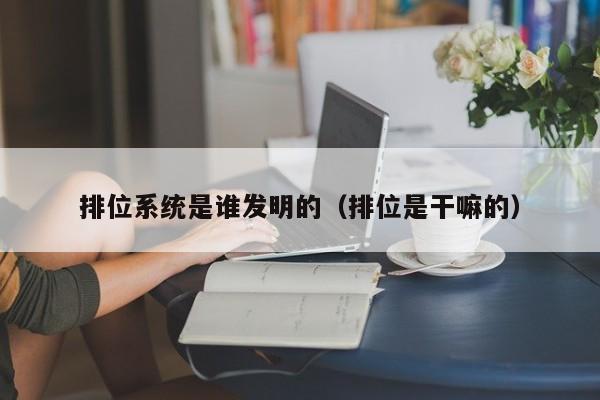
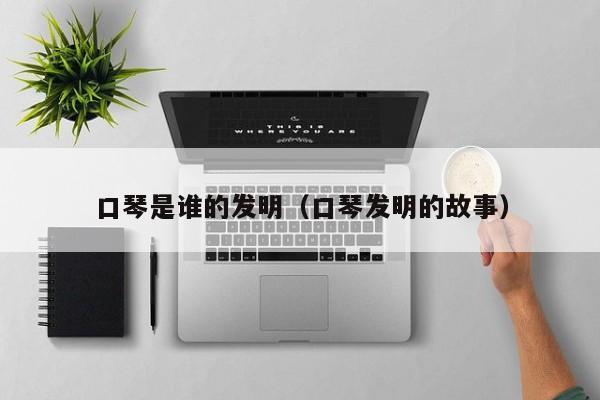
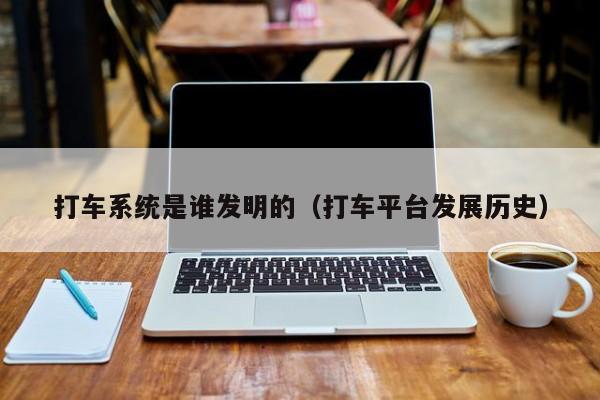



评论